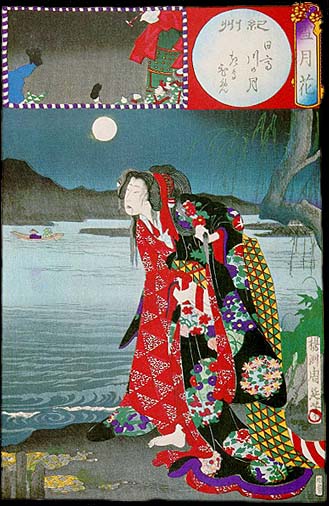

Kiyohime at Hidaka River (by Chikanobu)
This Edo period woodblock print represents a scene from the Bunraku puppet version of the Dôjôji story, Hidakagawa iriai zakura (The Cherry Trees Along the Hidaka River, 1759). In the Bunraku version of the story a young girl, Kiyohime, falls in love with an Imperial prince, who for political reasons is disguised as the priest Anchin. In this woodblock print representation of the most famous scene from the play, Kiyohime stands on the bank of the Hidaka river looking out towards the priest Anchin in a boat. (See the photograph of the same scene performed by puppets, p. 507 Traditional Japanese Theater). Unable to reach Anchin, how does Kiyohime vent her frustration? What visual clues hint at her coming transformation into a serpent? What lingering reference to the Noh representation can be seen? [For another version of Kiyohime at the river by Kunichika, click here]
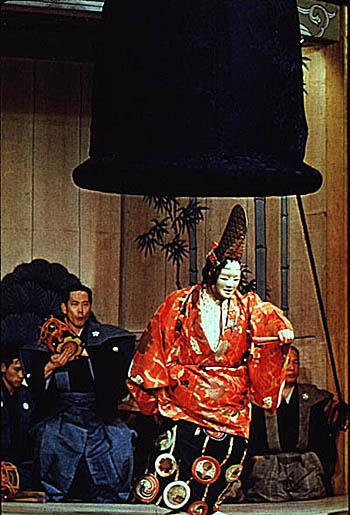
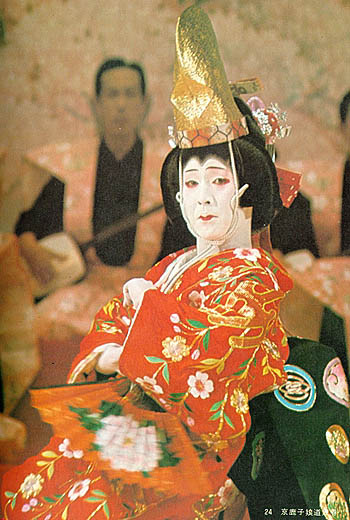
The Kabuki version of the play, Musume Dôjôji (A Maiden at Dôjôji), eliminates much of the original story, transforming it into a series of difficult dance pieces, with a number of different hand props and lots of costume changes, performed by an onnagata female role specialist. (If you want to read it, it is included in Traditional Japanese Theater, pp. 506-524). In this version the young woman is known as Hanako. Compare the costume of the young girl from the Noh play (left) and Kabuki (right). How has her costuming been changed? How has it stayed the same?
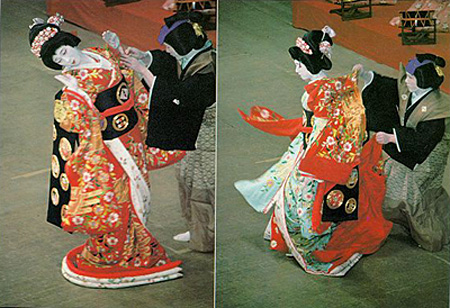
Kabuki Musume Dôjôji: here the actor Tamasaburo Bando is performing one of many quick changes of costume (hikinuki, literally, "pulling threads") that are a main focus of the Kabuki version of the play. [For more images of the Noh play Dôjôji click here. For more images of the Kabuki play Musume Dôjôji click here]

Serpent woman from Noh Dôjôji
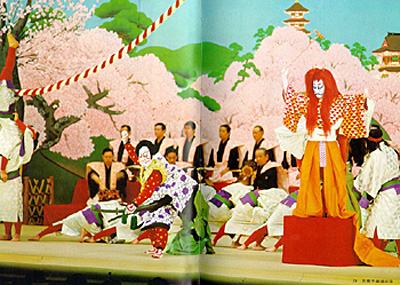
Serpent woman from Kabuki Musume Dôjôji
At the end of the Kabuki play, the serpent woman is triumphant.
Note the similarities and differences from the serpent woman's representation
in Noh.